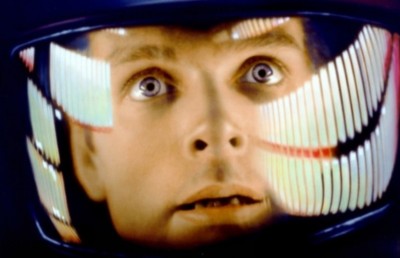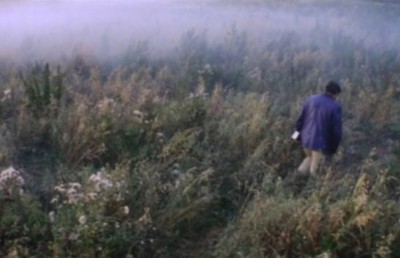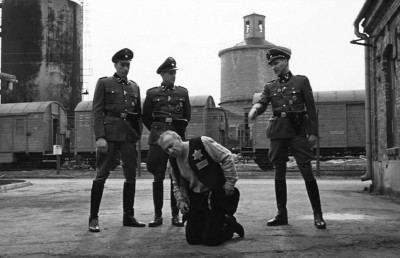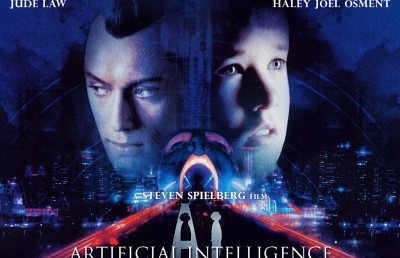History and Imagination: the book Steven Spielberg’s America by Frederick Wasser
An Entertainer Attempts the Work of an Artist
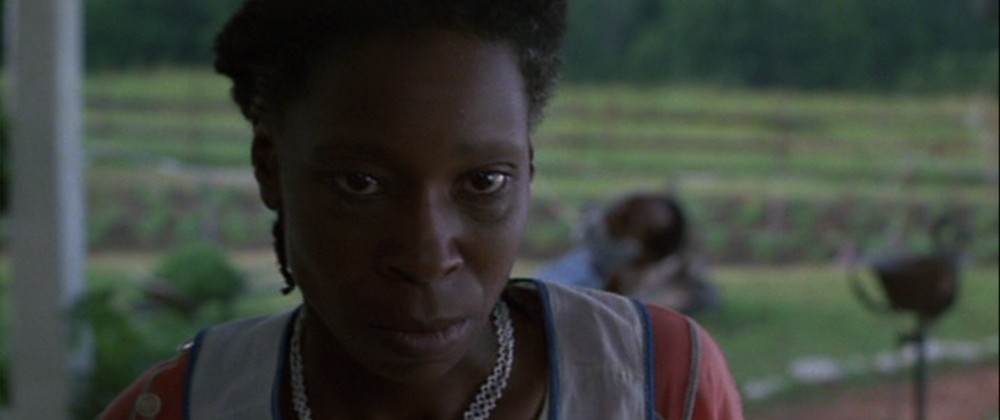
Steven Spielberg’s America
By Frederick Wasser
Polity Press, 2010
ISBN 978-0-7456-4083-9
240 pages
After the youth rebellion of the 1960s, the political exhaustion of the 1970s, and the conservative reaction of the 1980s, refuge was taken in the personal and the spectacular, according to Frederick Wasser, who has produced a study of the phenomenally successful American film director Steven Spielberg, the man who gave boys and girls of all ages Jaws, Close Encounters of the Third Kind, Raiders of the Lost Ark, Empire of the Sun, Jurassic Park, Schindler’s List, Saving Private Ryan, Minority Report, and War of the Worlds. “Culture and politics reflect and determine each other in a relationship that has become increasingly perplexing,” asserts Frederick Wasser on the first page of a book about a cinema craftsman and inventor—Steven Spielberg—whose work, surprisingly, has borne close relationship to cultural change: the book, Steven Spielberg’s America, an informative but imperfect book that allows the reader to begin to fairly assess Spielberg’s influence. Steven Spielberg’s career spans more than four decades, and his work has been founded on mastering belief and controlling disbelief; and he cultivated first wonder and then understanding. His early work did not interest me at all—the first film of his I saw that mattered to me was Empire of the Sun, a film focused on an English boy separated from his parents when the Japanese attack Shanghai, China, during the twentieth-century’s second world war, and the boy’s experience in an internment camp; and years passed, and then some of Spielberg’s other films were intriguing because of the subjects featured: Amistad, Artificial Intelligence, Minority Report, and Munich. To me technique only matters if an artist has something to say. Frederick Wasser thinks that Spielberg must be considered as part of an industry catering to the largest cinema audience in the world; and yet that Spielberg’s earnings and fame have granted him the freedom of self-determination, allowing him to move from escapist entertainment to critical realism—the freedom of an artist. How has Steven Spielberg used his freedom; and will that be of lasting import?
Steven Spielberg gave audiences new sensations, if not experiences (is it an experience if it is a response to something that is not real?): he used his camera to bring the viewer closer, to indicate insight and to give thrills, and thrills that were often focused on destruction, boyish thrills. Spielberg considered sound and used editing to increase the impact of his images. He immersed the viewer in the worlds he presented or created. “Spielberg’s camera style was instantly acclaimed and accounts for his wunderkind success” declares Frederick Wasser (page 7). Wasser recounts Spielberg’s early exposure to film, when as a child Spielberg, like other directors of his generation, saw many films on television; and later designed his films for both the large screen and the small, something that fed the home video market, adding wealth to films that already kept long theater lines around the blocks in neighborhoods, towns, and cities. “While his earlier films fitted in with Reagan’s resurgent America, his films at the turn of the century had a more questioning relationship to the dominant political ideologies. Yet they still retained much of the blockbuster, antireflective style” (page 10). Yet, Wasser says that early Spielberg films contained some social and political aspects that audiences ignored, as a comfortable audience—in the Reagan/Thatcher years—had less inclination to look for meaning in its entertainment.
Spielberg would insist on sitting at the table for grown-ups, making films such as Schindler’s List and Saving Private Ryan, ambitious and persuasive historical films that reinvented the look of the twentieth-century’s second world war (11). Spielberg moved from conveying the thrill of destruction to showing its terror and consequence. Although set in the past, historical films draw attention to contemporary parallels and values (whether in Bosnia, Iraq, Rwanda, or cosmopolitan western countries), helping viewers to understand the present. Yet, Frederick Wasser does not think of Schindler’s List as Spielberg’s great historical film, preferring Saving Private Ryan and Munich; and Wasser thinks of Spielberg’s Minority Report and War of the Worlds as motion pictures that “contemplate democratic society’s response to destruction” (13). One can see the present not only in the past but in visions of the future. Spielberg’s films—which once seemed a symptom of culture, began to provide reflection—“become unwitting allegories for a society that always hopes there is a way to avoid tragedy, to not make hard choices” (15).
What produces a Steven Spielberg? Steven Spielberg’s father Arnold had been a Jewish-American soldier in the Pacific during the war to defeat fascism, an electrical engineer who became involved in computer electronics; and Arnold Spielberg’s family moved to Ohio, where his son Steven was born in 1946 and lived, before the family moved to New Jersey and Arizona, and then California. Arizona was part of the sunbelt—below the 37th parallel, the sunshine belt that pilots could see from the air—and in Arizona, Spielberg as a boy began making 8 millimeter movies. There is a preference for the private, domestic life over the public life in the sunbelt, a preference that has national resonance, although much of culture is produced on the west and east coasts and distributed internationally. “Americans want family-type feelings from their stories, their movies, and even their political leaders,” surmises Frederick Wasser (24). While regional attitudes and culture had and has influence, television has been a source of tradition (the national networks for the live dramas and movies they showed, and production companies such as Disney). Yet, increased leisure activities, such as sports, competed with television and film in the 1950s; and alienation of youth from the mainstream in the 1960s had its effect. Culture changed and new kinds of films, with more direct presentations of social conflicts and vivid scenes of violence and sex, began to be made—Arthur Penn’s Bonnie and Clyde and Mike Nichols’ The Graduate were two. Simultaneously, more people began to speak of film directors as authors or auteurs whose concerns and techniques unified their work (sometimes that assertion just seemed to be college boys trying to justify the old Hollywood westerns they liked before they could think clearly or deeply or the strange new European films that might generate careers for their interpreters). Studios began to welcome young directors, especially from California’s film schools; and, Spielberg, who had begun taking classes at the California State College in 1965, was very much focused on making films—and with personal associates made his first film, Amblin’, in 1968, about an ordinary boy’s infatuation with an eccentric girl, a girl of the times. The film got Spielberg, at 22, a Universal Pictures contract to direct television programs.
In his television work, Spielberg liked the high-angle wide shot and let his camera roam, things that got notice; and in a “Columbo” episode his technique was able to suggest a dangerous inner life beneath a blandly sunny surface. He also made a television movie, Duel, based on a Richard Matheson story, about a man in a car chased for unspecified reasons by a truck on a highway. The movie was released in Europe, where critics thought the story might be symbolic, representing class conflict—Spielberg did not support that interpretation, due to what Wasser submits was “Spielberg’s provincial American rejection of a European political analysis,” a summation that seems an excess of scholarly portent—and hilarious (52). Spielberg’s comments do suggest a practical awareness of the limits of ordinary American life, of illusion and reality, and of consumerism—but his awareness is experiential, not theoretical (53). The great film critic Pauline Kael once compared the warmth of Spielberg’s vision (in his movie with Goldie Hawn, The Sugarland Express) to the coldness of Terrence Malick’s vision—Wasser spells Malick’s first name Terence (59): Spielberg finds it difficult to condemn his characters, difficult to present them as anything but human. Steven Spielberg’s breakthrough, as everyone must know, came from a story he discovered in manuscript form, Peter Benchley’s Jaws, which would become a bestselling shark-attack novel and then a film that mixed the horror of Alfred Hitchcock films with the disaster scenario popular during the 1970s. Jaws was the first of Spielberg’s films that seemed to reach people beyond generation and class, and inspired repeated viewings. (I cannot recall if I saw it upon its original release, but when I did see it a few years ago, I was, of course, not impressed: I was bored.) Jaws taught studios that action-adventure motion pictures could make big money; and studios came to expect that. (One earnings table in the Wasser/Spielberg book—on page 76—lists Jaws as a 1975 release that made about two-hundred-sixty-million dollars in the United States; but, the appendix on page 218 lists Jaws as a 1971 release while confirming the dollar amount. That is not the only error in the appendix.)
Spielberg’s other important and popular early films are Close Encounters of the Third Kind, Raiders of the Lost Ark, and E.T. The Extra-Terrestrial. Frederick Wasser discusses how domestic American stress (Vietnam and Watergate)—with international conflict and new war technologies—and renewed interest in unidentified flying objects, as well as broken families and the emphases on children and youth, found correspondences in Spielberg’s work, which dazzled audiences. Genres were combined in film scenarios; and technique was utilized (light, movement, pacing); and hundreds of millions of dollars made. It is very amusing to have Wasser dutifully recount how much money each Spielberg film makes, something that film audiences themselves cared about—and one proof of the director’s impact. Some people began to consider that impact—was it benevolent or destructive? Pauline Kael, for one, saw Spielberg’s influence in making films more child-centered, more about wish fulfillment—and less adult (page 111). His influence—literally sensational—occurred at the same time as the dwindling of alternative film visions, markets, and screening venues. The film producer became important again. Spielberg himself embraced “high-concept” filmmaking, films that could be described and sold with few words: he said, “If a person can tell me the idea in twenty-five words or less, it’s going to make a pretty good movie” (114). Big Yuck.
Spielberg heard the complaints. He was also older, an adult, and a practiced craftsman. He had not only freedom and influence but power. How did he want to use that power? He decided to film Alice Walker’s novel The Color Purple, focused on two sisters, on youth and maturity, on ignorance and knowledge, on America and Africa, on abuse and redemption, and on love and sex. Much of the book, a popular but controversial African-American and feminist novel, is told through letters, in idiomatic speech; and I recall discussing it enthusiastically with friends. Seeing the film, which had Quincy Jones as one of the producers and featured Whoopi Goldberg and Oprah Winfrey, was a great disappointment—Spielberg had turned the story into a fable, nearly a fairy-tale: its aesthetic look was a betrayal of the book, as was its revision of the story (for one thing, an independent and even sensuous spirituality was transformed into institutional religious observance, with a rebel woman leading others to church). Whom was Spielberg protecting from complexity and pain—his audience or himself; or both? Wasser says too mildly that “the result was more myth than history” (125-126). Spielberg did better with J.G. Ballard’s Empire of the Sun, about the second world-war Japanese attack on China and the imprisoning of an 11-year boy with others in a camp, where the boy stays for four years until liberated by the Americans. The boy makes friends, but his is a struggle for survival; and the boy in the film does not recognize his parents when he sees them. The film had complexity, and was more popular with Europeans than Americans. (It was a film I liked immensely, and took boys I was tutoring to see—and they loved it.) “The happy ending is neither happy nor is it an ending. It is a prelude to a new more deracinated world where loyalties are not easily granted to nations or even to smaller groups,” says Frederick Wasser (133). Empire of the Sun was a film that could appeal—with truth rather than fantasy, with reason rather than wishes—to adults, and to more than one generation. It inspires Wasser’s eloquence: “Horrible beauties are found in the remnants of immense tragedies such as caskets floating in the harbor; an implied rape in the footprints set in spilt talcum powder; the depiction of the distant Hiroshima bomb as a subtle colored light in the morning sky that Jim mistakes for a departing soul” (133). Bravo.
After making another Raiders??/Indiana Jones movie, and ??Always and Hook, during a time when hard-bodied heroes ruled the multiplex theaters in films that reminded some of 1970s vigilante movies, Spielberg made his dinosaur movie Jurassic Park, which used computer imagery, and the second world war Jewish holocaust film Schindler’s List, both released in 1993, during the age of Bill Clinton, a pro-business Democrat, an American president whose populist rhetoric did not translate to pragmatic policies: “Both 1993 films engaged problems of representing what once existed, and now exists no longer” (148). (It would be interesting to ask how Spielberg could complete two very demanding and different films in one year. How much did he do himself; and how much did he delegate? The credits for many major motion pictures read like the extensive staff listing of a company or corporation.) The documentary element of filmmaking encourages trust in the accuracy of what is being presented, whether dinosaurs or Nazis are shown; even though computer imagery exists apart from the real, and the dinosaurs are shaped by human imagination. “The logic and status of film imagery comes from its photographic relationship with the world, which is so direct and immediate that viewers typically think it is more objectively powerful than either painting or literature,” claims Wasser (148).
Yet, before the release of Schindler’s List, and during its initial circulation, questions were raised about the ability of film to tell such difficult history. Based on Thomas Keneally’s book Schindler’s Ark, the film Schindler’s List, a fiction inspired by fact, is focused on a man with luxury taste and salesman skills, a man who gets Jewish investors for a factory he uses his connections to German officers to make a success; and the film shows the increasing horror of Jewish marginalization and murder, as the Jews are registered, rounded up, put in ghettoes, then transported to camps and killed. Oskar Schindler, the sensual money-maker, protects the Jews who work for him; and saves more than one-thousand lives. It is an inspiring story that makes an impressive film: a black-and-white film printed on color stock, a film that has staged and improvised scenes, and mostly uses English as its language, and which tells a story important for the world—but it is a film with limits. Are the limits Spielberg’s? The film, which is good enough to allow the viewer to bring his own serious thoughts, has horror but little politics: “not fascism; not even anti-fascism” and “the cataclysm proceeds as a force of nature” (155).
There is a difference between history and myth. “Can a blockbuster film really do the work of historical imagination?” asks Frederick Wasser (164). Spielberg made a film centered on enslaved Africans and their struggle for freedom in America, Amistad, a film more driven by language than action. It was only a moderate success, receiving mixed critical and audience responses. It is actually a respectable film—especially for its insistence on giving prominence to the divergent languages spoken by historical actors (and the necessity of mutual understanding), and for articulating ideas and values (169). However, history was rewritten for the film’s purposes in its presentation of John Adams and the abolitionists, establishing relationships that did not always exist (170). Unfortunately, the film’s formal aspects did not allow a dynamic sense of life that moved from the screen to the eyes and imagination of the viewer. Spielberg’s Saving Private Ryan, focused on the generation that survived the great depression and the second world war, received great acclaim, but in its story—four brothers go to war, three die, and the army tries to find and save the fourth for his family and for morale—it raises questions not fully answered. What is the nature of a good life, and can private life be substituted for public purpose? Why is war fought—by nations; by individual soldiers? Does a soldier fight simply to be able to go home? (Why leave home at all?) In the film, known for its visceral opening battle, some lives are sacrificed for others; and the sacrifice must be redeemed by how the saved person lives. True, or sentimental? Is it that a survivor lives happily, and a “happy life becomes the wish fulfillment” (178) in the film?
Times change; and new heroes emerge: increasingly, though they may yearn for decency and personal and public purpose, heroes are connected to technology, as in A.I.: Artificial Intelligence and Minority Report, two films by Spielberg, whose place in American film was, by the time those two films were made, singular: a high status that no one is likely to maintain always. It was the film director Stanley Kubrick who introduced the first project, Artificial Intelligence, to Spielberg, and the actor Tom Cruise brought the second, Minority Report, to him. The anticipation of crime, and the arrest of presumptive criminals, in the futurist world of Minority Report corresponded to the fear and paranoia motivated by the September 11, 2001 World Trade Center attack, and the announcement of the Bush administration that it might attack countries thought to be considering acts hostile to the United States, an announcement that preceded the invasion of Iraq on believable but false charges (186). Spielberg conducted a seminar on “the future” in preparation for his film Minority Report, to which diverse thinkers were invited and participated; and that helped with the production design and technology, such as the gesture-driven computer technology and the surveillance practices in the film (188). The prediction of crime becomes the basis of policing in Minority Report; and one police officer, played by Tom Cruise, finds he is going to be arrested for a murder yet to be committed—and he must find out why and try to clear himself and get an alternative view, a minority report, from one of the future-seers. In a country that already has millions of people in jail and prison, Minority Report, although beautiful and exhilarating, was a frightening vision—one that, internationally, made more than three-hundred million dollars.
Spielberg then directed Catch Me If You Can, The Terminal, War of the Worlds, and Munich. In Catch Me If You Can, starring Christopher Walken and Leonardo DiCaprio, the financial trouble of a father and family leads to a family crisis, and a son’s becoming an identity thief, pursued by an Federal Bureau of Investigation agent (Tom Hanks); and in The Terminal, a foreign traveler (again Hanks) finds his country dissolved, leaving him without a valid passport and stuck in an airport, where he begins to live, helped by American ethnics. The 2005 science fiction film War of the Worlds, based on the work of H.G. Wells, presented catastrophe: aliens come, kill humans, exploiting them as a natural resource, and there is little human cooperation against the enemy (206-207). To see the vast destruction of buildings and landscapes brought to mind the lower Manhattan attack and also images of war, familiar from television and newspapers—but the film was concerned with one man’s attempt to get his children to safety, a small but significant thing everyone could understand. I recall liking War of the Worlds and being frustrated by Munich, about the Palestinian murder of Israeli athletes at the 1972 summer Olympics and the Israeli agents who seek revenge against Palestinian terrorists. Two great actors, Eric Bana and Daniel Craig, are in Munich, but in the film, “neither fictional nor factual,” although there are attempts to convey the perspectives of Israelis and Palestinians through conversation—the conversation tends toward melodrama, rather than political analysis—with the violence shown and the lack of true resolution “there is not a glimmer of wish fulfillment” (208 and 211). The anguish in Eric Bana’s face, and the brief, casual dance of two men—one, I think, was Daniel Craig—are the most human elements in the film. The incident that inspired the film may not have been large enough to represent all the issues (nor all the possibilities) that surround Palestine and Israel. Yet, Munich is an admirable film for an American or Jewish-American director to make, one the foreign audience responded to more than the American audience. “The American audience seems to be tiring of engagement,” says Wasser (212), the kind of statement that can make one laugh (the audience rarely has been other than that). Of course, Spielberg decided to make another Indiana Jones movie.
Essay submitted Feb 11, 2011


